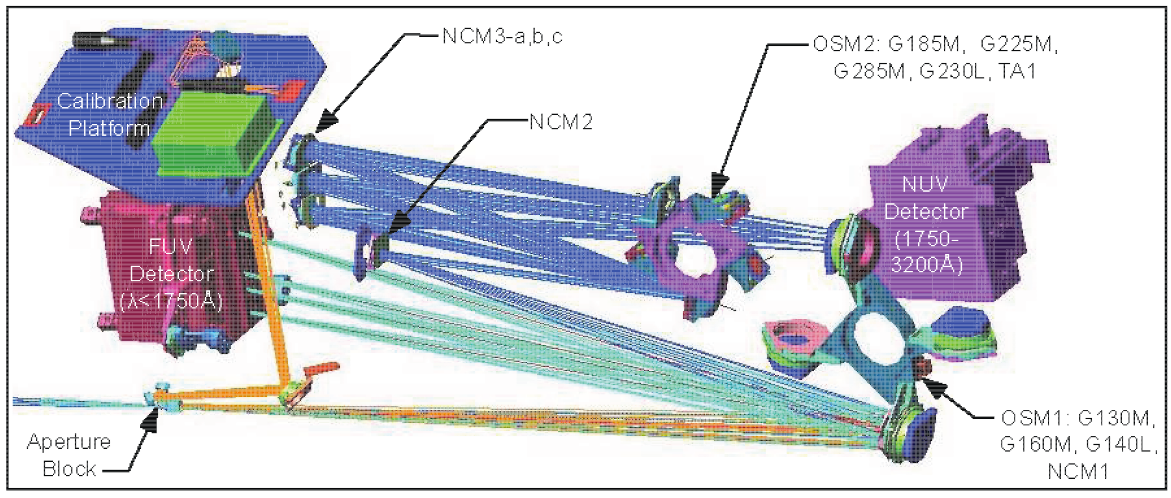Title: The Cosmic Origins Spectrograph
Authors: Green et al.
First Author’s Institution: UC Boulder
Time is a very valuable commodity. The more seconds needed to observe a single object means the fewer you can study. While there are many instances where hours spent staring at a single source can provide amazing astrophysical insights, large surveys depend on acquiring data for as many sources as possible. Reducing the amount of time needed to do a single measurement then becomes an important consideration in the design and construction of an instrument. The recently installed Cosmic Origins Spectrograph (COS) on the Hubble Space Telescope is an example of an instrument built for efficiency.
Any single telescope such as Hubble or Keck will have multiple instruments (i.e. a spectrograph or camera) built and optimized for different types of science. In the case of COS, its efficiency comes from exquisite sensitivity — the ability to detect very small signals above the background noise. One good way to boost sensitivity is to increase the size of your mirror. Unfortunately, this is not an option for the Hubble Space Telescope and a sensitive instrument must instead make the most of the available photons. The technical term for this is throughput — having as much of the light that is collected by the mirror end up at the detector. In practice this means having as few parts as possible interact with the light. Every time light bounces off a mirror or travels through an optic some portion of it is lost. For the short wavelengths of ultra-violet (UV) light these effects are particularly severe.
Below you can see above the layout COS and lines tracing the path of light through the optics. Light is collected by the Hubble mirror and directed to either the Far-Ultraviolet detector (FUV: λ<1750 Å) through a grating or to the Near-Ultraviolet detector (NUV: λ<1750 Å) along a path with only four reflections. The initial slit that directs light to the spectrograph is also optimized to reduce any loss. Along with reducing the number of optical components, COS uses a detector with a surface area large enough to catch most of the dispersed light. This means that fewer exposures (less time for one object) and no additional optics (better sensitivity) are required to record a broad spectrum.

The COS optical layout shows how the light is corrected for the HST mirror aberration, dispersed, and directed to the detectors.(figure 1 from the paper)
The paper lists a number of other choices that improve the efficiency, but any design must value some things over others. For example, COS uses a particularly sensitive detector, but they must sacrifice a 5% efficiency loss per year because this type of detector plane is not protected by a window and degrades more quickly. Furthermore, while COS was first proposed as a high resolution spectrograph it was ultimately built to produce medium resolution spectra. Spectral resolution is the measure of how well you can tell the difference between photons of different energies. A spectrograph records the dispersed light on a detector plane so if you increase the dispersion (try to get higher spectral resolution) the spectrum will no longer fit onto your detector. This means you are missing photons (reducing throughput) and cutting off your spectrum. Furthermore, increasing your spectral resolution means there are fewer photons per energy bin which reduces your signal to noise. The benefits and cost of many such choices must be weighed during commissioning. After all the decisions have been made and the hardware built, the sum of all the redshifts (or cosmic distances) of the extragalactic objects COS has observed in 20 months is 9 times what Hubble had covered in the previous 19 years*. In the end, careful engineering enables the exciting science that comes from state of the art instruments such as COS.
*this is at moderate resolution.





